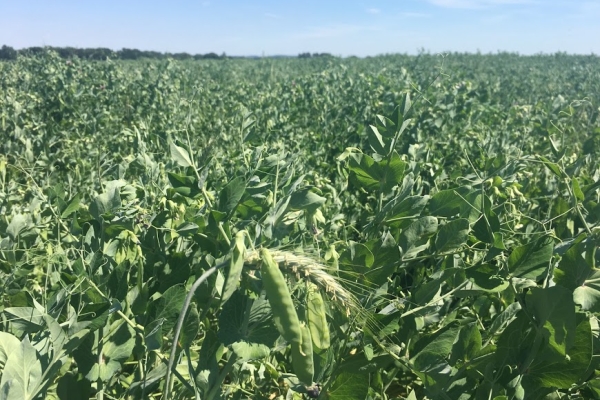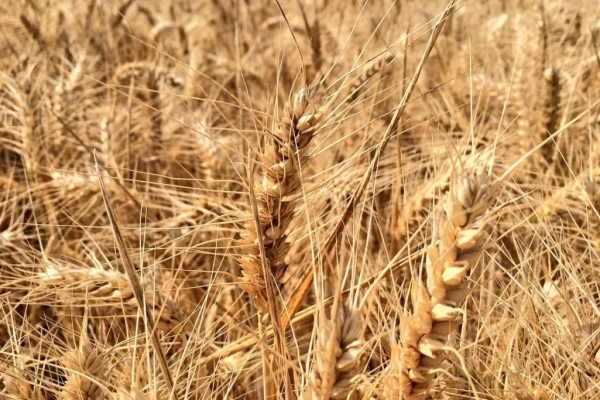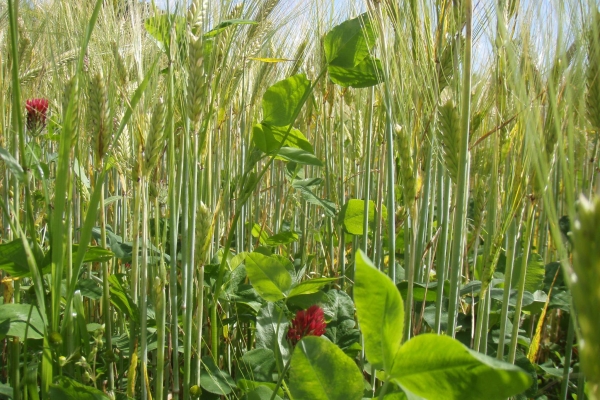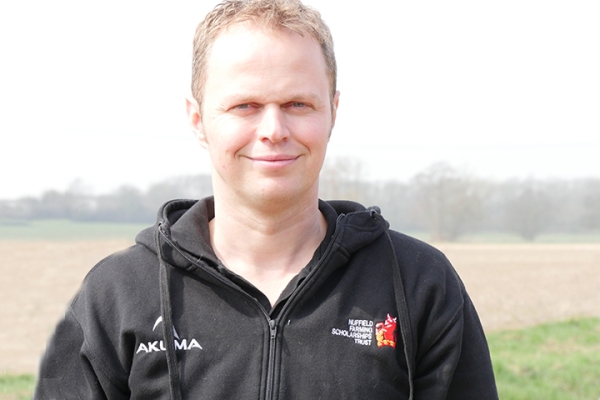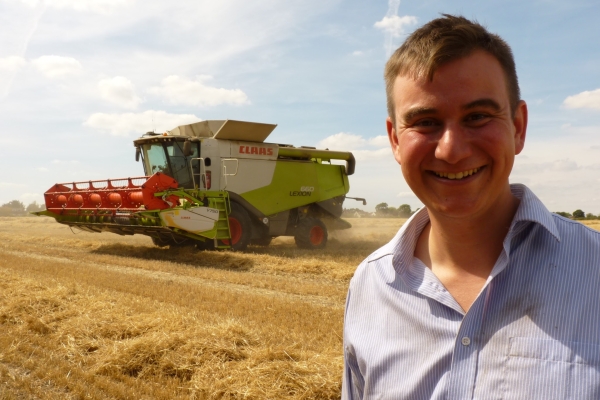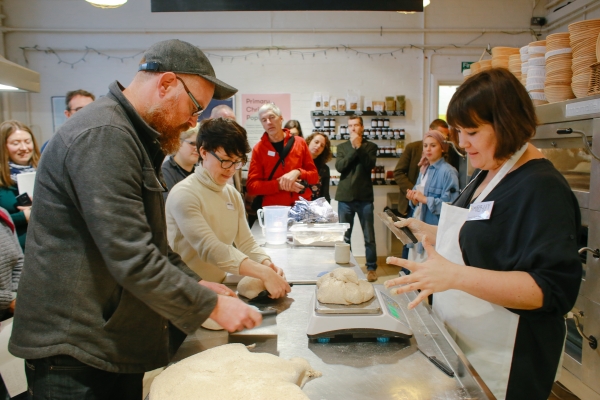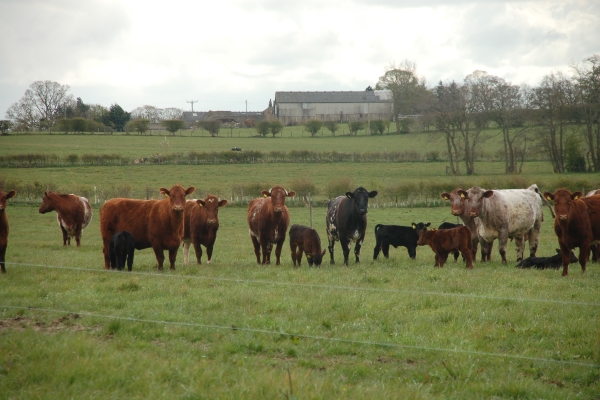The Stringer family
J Stringer & Sons, High Callis Wold, East Yorkshire
I (Mike) manage the farm at High and Low Callis Wold together with my family. I am the third generation of a 3-generation tenancy (more than 2 thirds of our land is rented). The farm has gradually grown to what is now 1,100 acres of arable and grazing land, and is a diverse business, with all the livestock and around 50% of the arable land farmed organically, in what is a very traditional farming area of the Wolds.

The land belongs to Halifax Estate and we’ve bought off bits over the years. Kate combines her veterinary physiotherapy business with helping manage our own flour mill. She sorts out a lot of the flour and has more contact with our direct customers, providing more of a supporting role. She has a regenerative approach to her job too so we bounce ideas off each other.
Our son Sam (pictured) also works on the farm – he has lots of ideas still forming and is particularly passionate about moving towards a more regenerative practice across the conventional approach at the moment – probably partly because he has watched it develop. Our daughter Charlotte is keen on farming as well – she is currently studying bio veterinary sciences at university. She really likes the stock side, we’re not sure yet where it’ll take her – she might be too ambitious for us!

The farm has been here since just after the Second World War – my (Mike’s) granddad took it on. He was a soil biologist /scientist originally and somewhat before his time. His influence probably led to less objections on the organic side! My dad and my Uncle Martin were in partnership for a long time – they made us work hard. My uncle went off and did his own thing – we still work with him now but have separate businesses. My parents are still partners in the business – we run decisions by them.
We started conversion to organic in 1999. It was for environmental reasons to an extent, the cattle and sheep were on an extensive outdoor grazing system and the crops were very much ploughed and cultivated – it was generally high input agriculture. At the time cereals weren’t worth very much and there seemed to be a strong demand for organic produce. It was only the cattle we were going to convert originally as they were on a low input system anyway, but we made some enquiries with organic farmers and soon concluded that it wasn’t easy to convert just one enterprise on its own. We converted High and Low Callis. Much of the land farmed conventionally was 5 or 6 miles away and we always felt the stock were an integral part to what we were doing, and it was easier to keep the stock on one farm. We can get round that nowadays. Some of the land further away from the farm was also quite hilly and therefore challenging in relation to things like weed control.
We have been taking an interest in the growing regenerative agriculture movement and are experimenting with techniques on both the organic and conventional land. We have been direct drilling now for about 3 years.
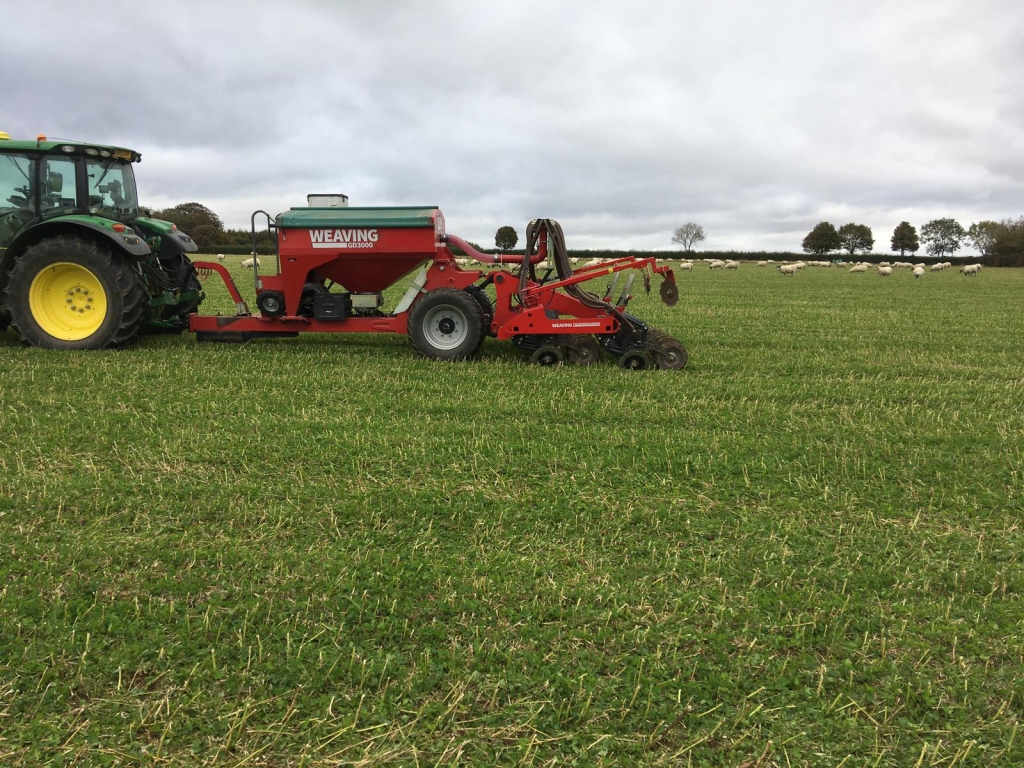
Conventionally we used to grow wheat, barley and oilseed rape (OSR), and had potatoes as well – which we stopped growing about 6 or 7 years ago. Since we converted to organic we have been offered more land – it has generally fitted in very well with the stewardship schemes over the years – which are quite a big income for us. We are signed up to our current scheme for another 5 years. Some of the ways that we farm can be quite opportunistic, which can conflict with stewardship schemes and be frustrating!
Today we farm a 7-year rotation of spring oats undersown with clover (it stays down for 2 years), spring barley, winter oats, beans or spring rape, then quite often rye, then back to undersown spring oats. We silage the grass and clover leys during the summer then fatten lambs on them during the winter. Where there is a winter crop going into a spring crop, we generally put cover crops down. We try to get the livestock onto the arable fields at any opportunity we can, even if there isn’t a cover crop – they often graze the wheats and the rye when it gets big, which seems to work well as it’s usually the time of year when we’re often short of feed for the sheep (generally mid-Feb to mid-March).

We generally lamb about 420 Mule ewes (we put a Charollais tup to them). We fatten all the lambs then from about mid-August to December, most of them go. Stockman Steve does most of the lambing. They’re an easy breed to lamb. We usually have about 55-60 suckler cows. Most of the cattle are not far off from being pure Aberdeen Angus – we sometimes buy some stores so have some dairy Angus crosses – we like them as they’re reducing wastage from the dairy industry as well.
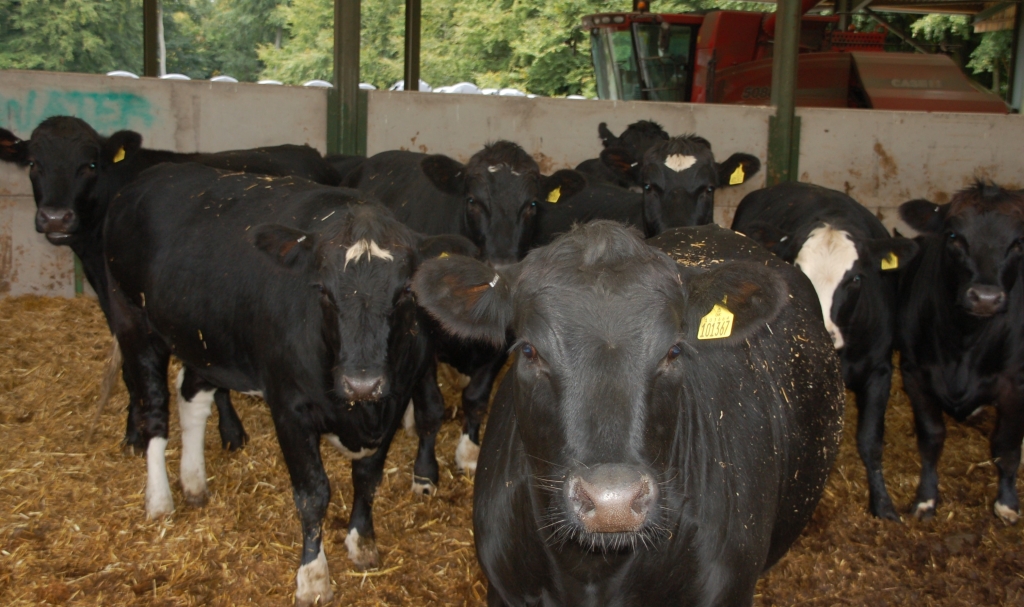
The cattle go to Dovecote Park / Waitrose, the lambs to Dunbia Carnaby, and the beans to Hodmedod’s. We don’t do any mob grazing currently – our permanent grass is quite spread around which makes it practically quite difficult. We like the concept but are also not sure how much it would fit into our stewardship scheme.
One of our big frustrations is we have the livestock but we can’t necessarily put them where we want them. Having land so spread out is a challenge… We have a profit-sharing agreement with my uncle where we could keep some sheep longer term but he’s 6 or 7 miles away so logistics are tricky. I’d love to get sheep on the arable land – with direct drilling the sheep can paddle the very top layer, so we have to be careful with that. On the organic front, the land ploughs well after the sheep have been on it which makes it much easier. If everything is grazed down you almost have a fresh start, and from a soil biology point of view, I can’t help but think it’s beneficial. I think ploughing organic land isn’t as detrimental as ploughing conventional land – the nitrogen (N) has probably made it more volatile in the first place, whereas the organic land doesn’t have the excessive level of N in there.
Typical yields (for the organic crops): Anything from ¾ of a tonne to a tonne and a half to the acre for milling wheat, generally anything between 1 tonne and 2 tonnes for oats, a tonne and a half for barley, and a tonne and a quarter for rye. Conventional crops yield about twice as much but aren’t worth as much and cost more to get there – with input costs etc. We’re growing some of the organic cereals (oats, rye, and barley) currently for seed as well (for Cope Seeds). It pays a bit of a premium and gives us more motivation to keep the seed clean!
A lot of our produce goes into retail; bakeries, with some direct customers who buy in bulk, and farm shops buy the milling wheat / stoneground flour. We have built up a lot of farmer customers for feed grain over the years too. We have made connections with some bakeries via the Yorkshire Grain Alliance (YGA) that we are part of (see ‘Sustainability in practice’). It’s still developing and we hope more bakeries will take an interest. It’s currently quite limited in terms of direct sales but works as a common interest group. It seems to be good for the bakers who are lacking contact with suppliers and allows us to learn from one another. We don’t just mill what the trade see as good for the job, but we listen to our customer base, including the millers and bakers, and feedback from our customers. The networking can be beneficial on the trade front, we wouldn’t have sold to people like the Apricot Centre if we weren’t part of the YGA, but it’s not just about that.
Our rapeseed is used to produces organic Yorkshire rapeseed oil – we have an arrangement with some close friends of ours who have a press. It can be a fickle crop – it failed the first time we grew it, we had real trouble drying it, and have had trouble with people buying it as it is more expensive. Trade enquires often demanded 1,000 litres at a time. Hodmedod’s take it now, along with some bigger shops. More people seem to want it now (including to make soap from). It’s a good crop and not many other people grow it. It’s really sold on the back of it being British and a better option than olive oil.
We also run Uncleby Education Centre with some neighbours, mainly for primary school kids. We feel that learning to talk about what you do as a farmer is really important. There’s a good saying by Einstein – if you can’t explain it to a 5-year-old, you can’t explain it to anyone.
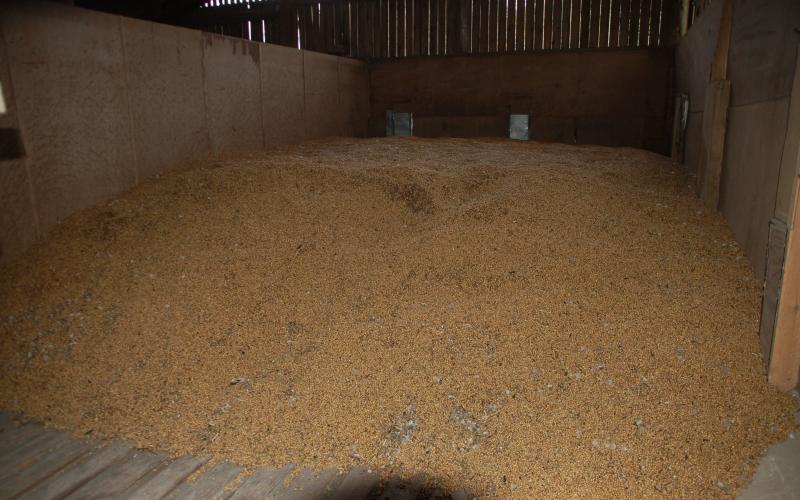

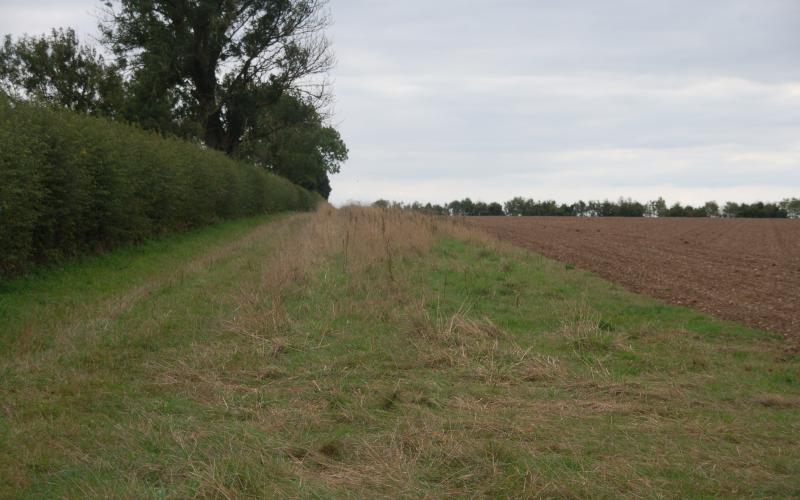





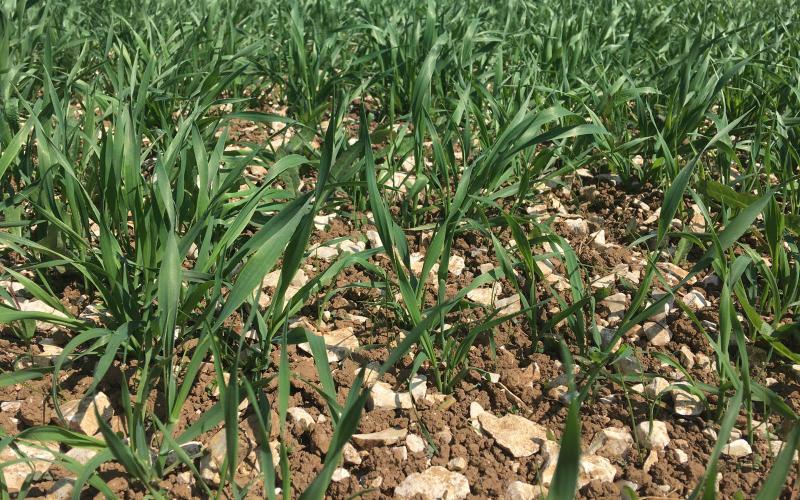
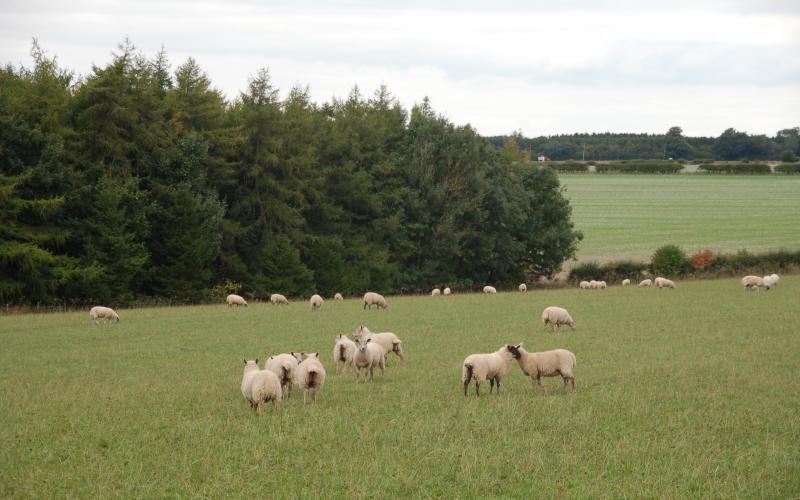
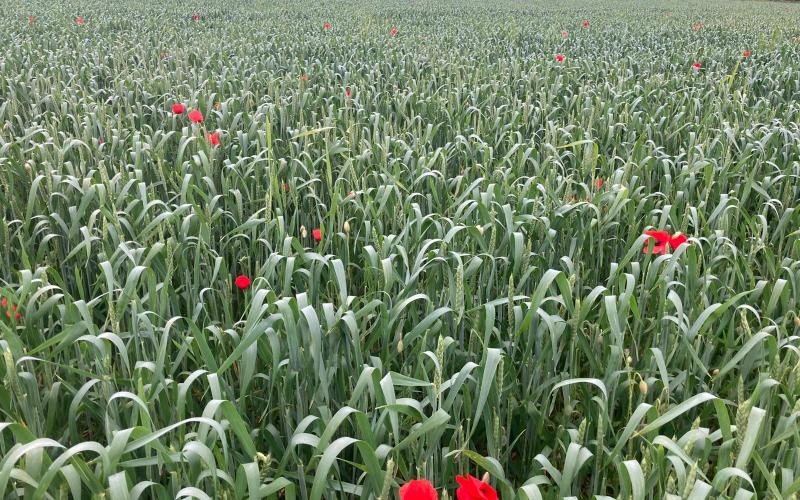
Sustainability in practice
Agroecological practices overview
It’s important as a farmer to create the right environments for birds and insects… It is obvious most animals don’t like a monoculture – the soil doesn’t either – so we try to promote diversity within the whole system. Growing the YQ wheat population opened our eyes to the possibility of diversity even within a variety. In our stewardship scheme we do have pollen and nectar strips which are beneficial, but we have a lot of infield diversity organically and haven’t seen as much benefit to growing something on the edge of a field compared to having it full of weeds! We have field margins, but have pollen and nectar and wild bird feed mixes on the conventional fields only now because we know we can clean them up – on the organic fields they just seemed to breed problems further down the line.
We’re becoming more diverse with the grass and clover leys we grow (providing good habitat); red and white clover, lucerne, sainfoin, some herbs, some grasses… We’ve included some plantain and sainfoin over these last couple of years.
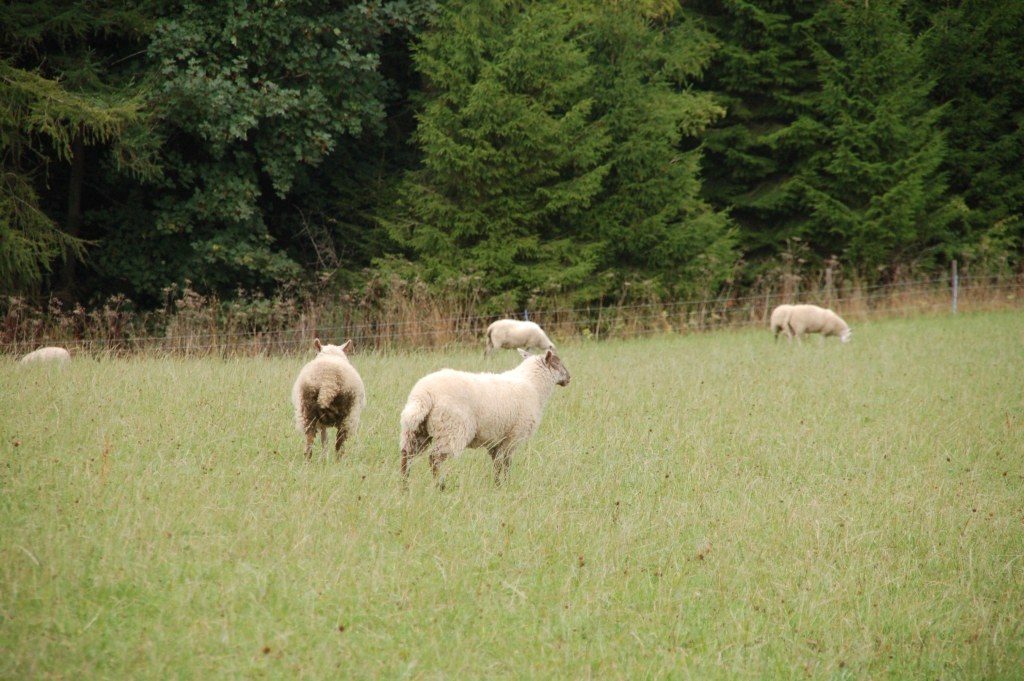
Lucerne has been great when it has been so dry – its long tap roots (which sainfoin also has) obviously found the moisture. It also flowered beautifully; the bees love it. When silaging, I like to leave a little strip of clover down the edge of the field. I really enjoy trying to be opportunistic. If you have a lot of clover in the bottom of your field, think twice before you get rid of it – it might be useful somewhere else. It is interesting how many bees we have on the small amount of land we have in the garden – we think it’s because the farm is providing a habitat for them which is really encouraging. We have also trialled a living mulch trial field for three years but have now ploughed it in (it will go down to wheat). We see there is still a role for the plough but are testing different regenerative approaches particularly on the conventional land. The diversity in our farm business allows for us to experiment a bit with our approach.
We have experimented with intercropping and found undersowing crops to be a real benefit; undersowing then harvesting oats for example. We often cut them really high with a combine then silage or graze what’s left. I’m very keen to experiment on the conventional land next year – still working through that with my agronomist. I would really like to grow some clover seed which might be part of a dual crop, we’ll see….!
Organically weeds are always a practical challenge. You have to be prepared to put up with them. We use a comb harrow and weed surfer to control weeds and have a group of people who help us with weeding.

Our attitude to weed control has changed quite a bit – and we largely deal with it via promoting infield diversity. Livestock grazing also really helps – getting them on at certain times, and having a 2-year grass and clover ley within the rotation is key. Ploughing helps, but not ploughing is as important. Rye has been great in outcompeting weeds – we put it in after the beans. We used to first plough but last year we direct drilled – we took the beans off then direct drilled the rye straight into it and had some cattle and sheep grazing it (the sheep love it!), it worked really well. On another field, we cultivated it lightly and broadcast the seed on it – it worked very well too. Sheep grazing definitely helps control the weeds.
I grew beans and OSR as a dual crop this year. I haven’t separated them yet (see photo). I was going to direct drill into it – I think the sheep would love the OSR.
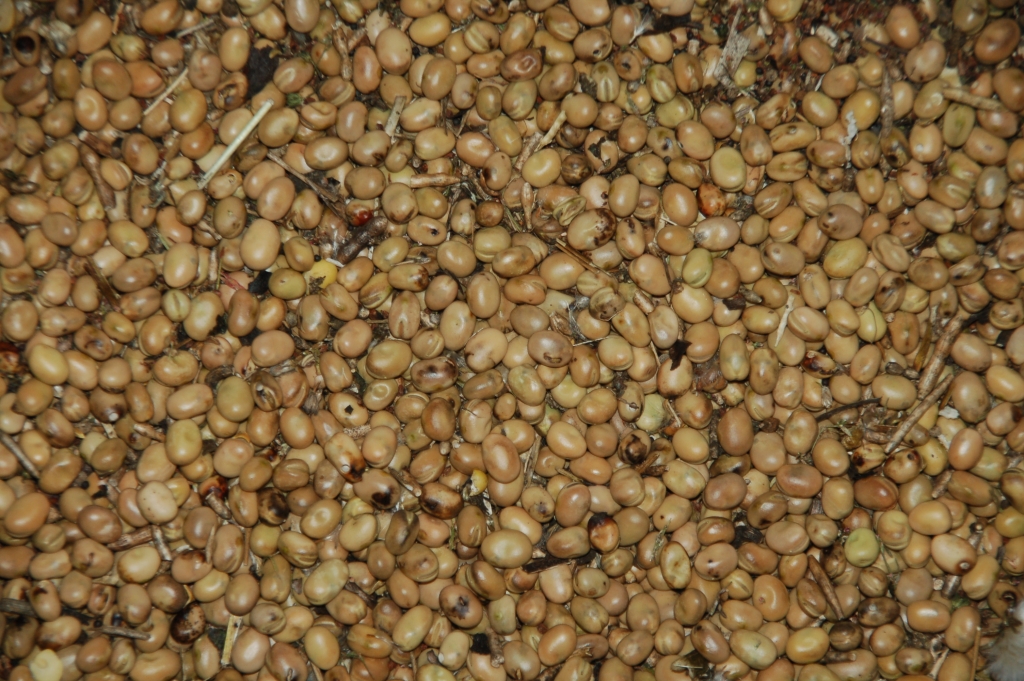
If I can direct drill one crop within the organic rotation, I can start reducing the amount of ploughing we’re doing which is a good thing. The weed profile is different for direct drilled crops and ploughed crops – you can get weeds that suits a direct drilled situation but also weeds that suit ploughed situations – having both and therefore mixing the weed population helps. Pollen beetle on OSR can be a challenge and prompted me to build a bug collector / an agroecological pollen beetle catching machine! It was basically a big trough with a really rounded edge on the front to catch them all – and it worked!
Growing and milling diverse grains and building connections between farmers, processors and customers…
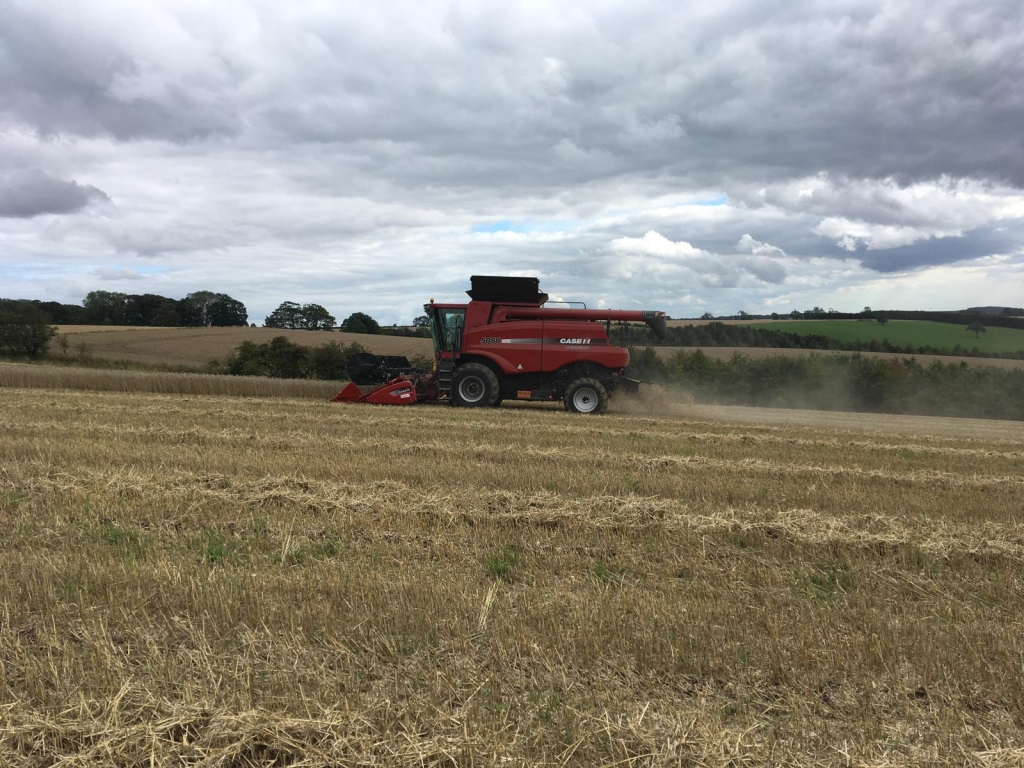
We are part of the Yorkshire Grain Alliance (YGA) (formed in January 2020 and part of the UK Grain Lab network), which is working to build a sustainable grain system in Yorkshire. In the YGA everyone has some ownership, investment and influence in what is grown / what they grow i.e. expressing an interest in a certain grain. The collective motivations are largely more environmentally friendly farming, community development and improved access to local food.
As part of this, and through our relationship with Hodmedod’s, we have been experimenting with growing genetically diverse cereals. The bakers are really interested in these as they are something of interest to sell to their customers, they also think they taste better. We have grown Maris Widgeon wheat (quite an old variety), the YQ population (see below, started 3 or 4 years ago ), April Bearded and Ölands – a very old heritage wheat which is quite interesting.

My dad has helped using his old combine for the strips. I’m planning to be less experimental this season – am sick of cleaning my combine out! (The YQ doesn’t all open at the same time, which is something to be aware of). We are questioning what the point of growing heritage wheats is if we can’t sell it at a premium to compensate for the generally lower yields, it might be better to stick to more vigorous and taller varieties that we know yield well, in case we do have to sell into commodity markets. They are still produced organically and could have their uses.
Plant breeding is a bit behind – we need some robust reasonably tall varieties – there seems to be either heritage varieties which are hugely tall or dwarf varieties, and it is a struggle to find something in-between. Maris Widgeon is good in this respect – it fills that gap. With some of the more modern varieties you can get a reliable crop that are much easier to manage – this can be more important than subtleties of flavour. We know genetic diversity can be important in relation to climate change, but we have to decide what to do on a year-by-year basis.
My (Mike’s) mum and dad bought a mill 20 years ago. We mill some of the wheat ourselves – and ended up milling a huge amount more during covid. The mill is only small – we now mill about a quarter of the organic grain wheat we grow. To begin with it was just to supply a few farmers markets, but then we started supplying a few farm shops… and it has carried on much the same since.
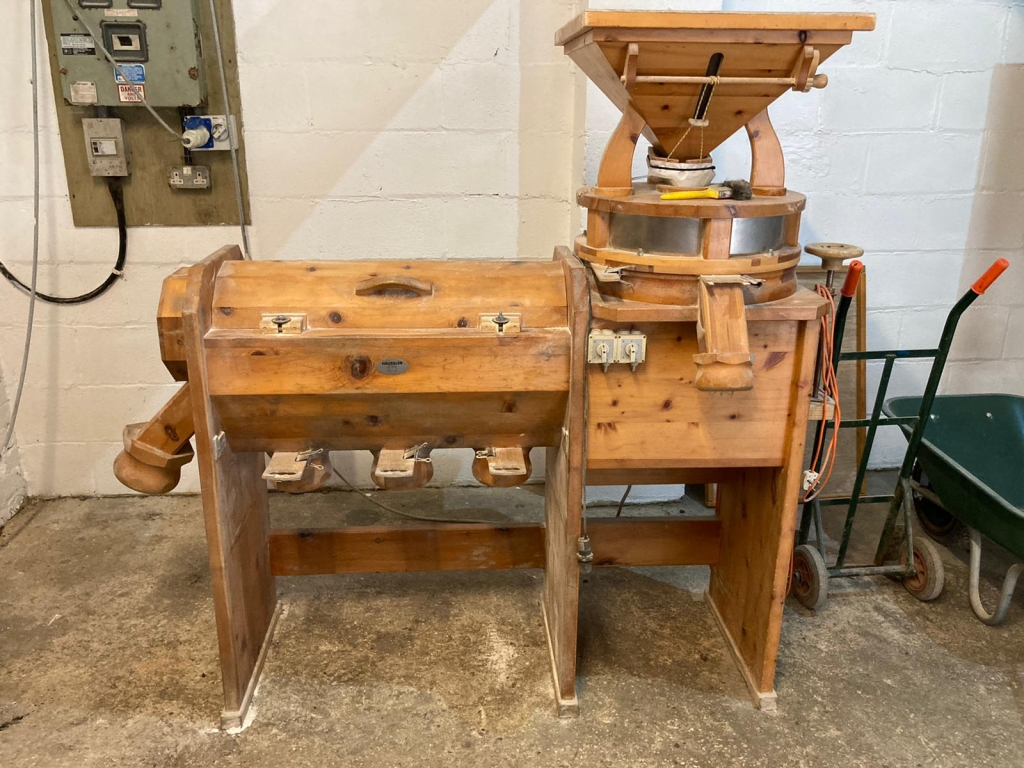
When my parents retired, we stopped selling via the markets – the children were young, and we didn’t want to do lots of travelling round at the weekend. Having the mill means we can taste and eat what comes off the farm – we take it for granted a little but it’s quite an unusual thing. The practicalities of having a market though can be quite a difficult thing to establish. We’re fortunate – my mum and dad did some of the groundwork for us, but flour is not a high value product, which makes it a better product really for the likes of farm shops… It’s also a market that moves a bit (we’ve had some bakeries that bought flour for a while, but then haven’t since).
Bakers’ businesses are probably in some respects less stable than ours is – they’re investing in a specific thing whereas we are spreading the risk across the farm, so are in a better position to take the risk. We have sold some grain to Hodmedod’s and the Apricot Centre, and some of it goes to bakers as grain. We sell rye through Cope Seeds. Our relationship with our suppliers/buyers has been quite influential – Hodmedod’s have been very open minded, as have most of our other buyers.
Flour isn’t the easiest thing to sell because it’s so cheap in the supermarket. We now make our own bread, so we trial and sample all the different wheats we grow and can now talk to bakers in a much more informed way. It has made sales of stoneground wholemeal / organic flour much easier – some people will buy it and not get on with it, but some will love it. But we have been able to explore all the really good properties it has.
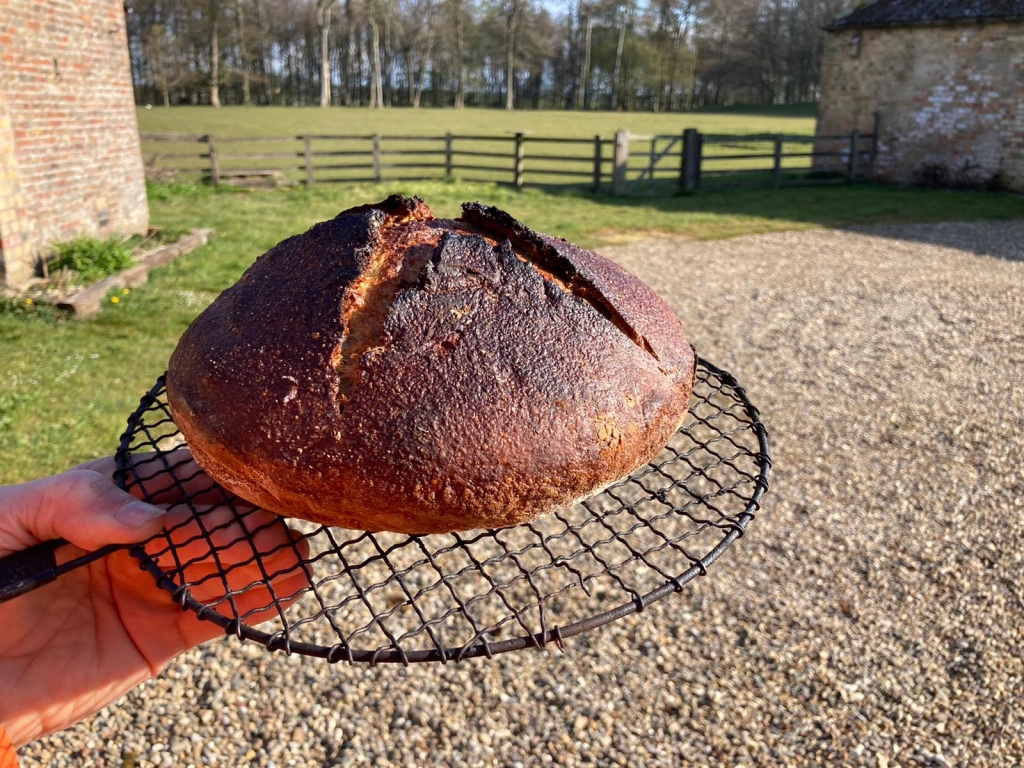
People to people relationships have been very beneficial to us – in the YGA, conversations with people have influenced our practices, making us realise there are quite a few people out there with a similar mindset and often a step ahead of us. The Organic Research Centre and Hodmedod’s have facilitated this through farmer meetings and study tours (for example a trip to Sweden to learn about intercropping). This has given us confidence – speaking to other people who think in a similar way to us allows us to bring ideas home and try them. YGA and the wider Grain Lab network have given us a wider view of the market and people involved in the market, stretching the concept of ownership with the grain. It is also beneficial for the customer to gain some knowledge of where things are coming from etc before it has even left the farm and YGA has a role to play in terms of public engagement.
Eating what you grow and sharing it with people is really important. What we produce and how we produce it has lent itself to having customers who are very transparent, and we try to be also, so if there is a problem with a crop, it’s all very open – we can explain what the issue is and the reason for it, and often if a customer can’t accept it for whatever reason, they might suggest approaching someone who they know won’t mind. It really annoys me with the conventional system that we seldom know where the product is going to end up at – I like to ask the drivers where they’re taking it and it can be not what you expect. We’re hoping to work on improving this within the YGA.
As the YGA progresses, and we can promote the different grains and how we’re growing them more, people will understand more about how they can use the flour in their businesses or at home.
Future aspirations
We have run the organic and non-organic farming as separate businesses – it has worked well but in some ways over the next decade it might be nice if it all became one organic / agroecological system. As much as anything it would give us the flexibility of moving stock round. If Sam takes the business on it needs to work for him rather than him mould himself to what is already here. Size wise, the farm is in some ways bigger than I feel it should be – you can lose details if you are too big. I’d rather be a size where we can do things well than be too big and not do things properly – optimising. It’d be great to see the YGA grow so that we can grow more wheat for human consumption as well. I can’t see us ever doing that 100% as I don’t think we’re located in quite the right place for it, but to have a more reliable market for that would be great. There’s huge value in the direct relationship. It’s not about money, it’s about having pride in what you’re doing – farming in a way that is sustainable and resilient long term as well.
Motivations
Our biggest motivation is wildlife – not using insecticides, reducing cultivations, and getting livestock onto the fields. Although we do use chemicals on conventional land it has never been a job I like so any chance I can get to reduce inputs (fertilisers or chemicals), I will do! I believe use of fertilisers creates a lot of other problems.
Growing seed potatoes was something that pushed us down the agroecological and organic way of farming – we used to grow conventional seed tatties and were locked into a system of everything being sprayed with insecticides every week and a half or two weeks, and with blight spray every week, and when we came to send them on to suppliers there was always something wrong with them anyway. We grew organic potatoes (without any sprays) for quite a few years (for seed as well) and they didn’t seem to get any virus problems so it prompted us to ask ourselves why are we spraying all the conventional potatoes with all these insecticides? Also, putting all the N on we would get all the unwanted weeds and insects, whereas if we took it away, we would take quite a few of the problems away as well.
A combination of things started influencing us… more and more people were talking about improving soils, Kate bought me the Gabe Brown ‘Dirt to Soil’ book, we sold some beans to Hodmedod’s, and Sam and I went to Sweden visiting farms supplying a Swedish company similar to Hodmedod’s a few years after as part of the DiverIMPACTS project, all of which set the cogs whirring… A Farmerama podcast series focused on grain also had a big impact, as did meeting other UK farmers with similar mindsets.
We can have issues with the influence of the older generation and neighbours; some of our ways of doing things are not always what people round here want to do, but we just have to dig in and do it. We have quite a good local group now of farmers who are interested in regenerative practices which is really encouraging.
The way that we farm now and milling our own flour and producing bread from it has led to the realisation that there is nothing we grow now that we don’t recognise as food, whereas 20 years ago I don’t think we grew anything we did recognise as food!
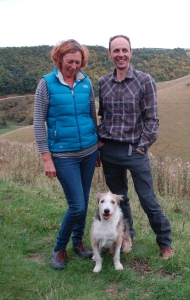
Farmer tips
- Respect your neighbours but do your own thing – find your niche – in both a farm and cultural setting.
- Removing some of the props for some of the inputs is probably not as disastrous as you might believe. You have to be careful what you remove and how you remove it, but there are ways round it.
- Talk to people – our regenerative farming group has been really helpful, as has talking to interested customers – it has helped take the pressure off as it has made us realise we have different options.
- Having a diverse business does reduce the risk and allows you to take risks too. It comes down to a diverse system every time – not being too tied in to one particular thing and being able to react.
All images taken by Janie Caldbeck and Mike and Kate Stringer. All Rights Reserved


